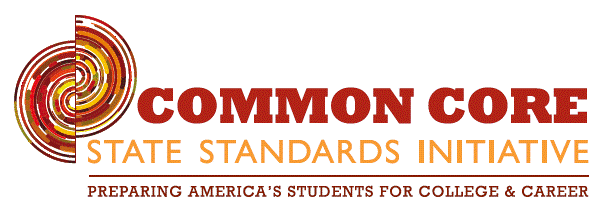Return To Teachers Speak
Transition to the Common Core
Change. The word strikes fear into some educators, while others view it as a welcome breath of fresh air. Teachers are sometimes accused of resisting change, and while that may be true to a certain extent for some, I believe that much of that anxiety results from a fear of the unknown. While it’s true that change takes time and patience, it is important to note that the change we are currently involved in – making the transition to the Common Core – still finds parallels between previous state standards and the new standards.
As a 6th grade teacher in New Jersey, there are definite similarities between the former New Jersey State Standards and the Common Core. Along with those similarities, there are also some differences – especially with respect to the organization of the standards and the level of specificity. Let’s take a closer look at the areas of Reading, Writing, and Language at the sixth grade level.

Reading
With the Common Core, Reading is broken into two distinct subsets – literature and nonfiction. This differs from the former New Jersey State Standards: before, teachers were expected to include a variety of fiction and nonfiction, but those text types were not separated into specific categories. However, many of the actual skills and understandings in the CCSS are similar to what we had used in our school district over the years. For example, the Common Core Standards cite that providing “textual evidence and determining a central theme” are necessary in becoming a literate person. Fortunately, these are two areas that we already address in our current curriculum and in our everyday instruction.
Writing
The former New Jersey State Standards required various kinds of writing, yet the Common Core breaks the writing into three distinct areas, with detailed standards for each one. Those three areas are: argument, informative/explanatory, and narrative writing. I believe this specificity will help teachers plan more effectively. For instance, Standard W 6.3.b asks the writer to “use narrative techniques, such as dialogue, pacing, and description”. These techniques can easily become the objective of writer’s workshop mini-lessons, and when assessing student writing, teachers can expect students to apply those strategies to their writing pieces. With the standard that asks students to “write arguments to support claims”, we will need to include that term – argument – into our instruction, as opposed to the “persuasive writing” that we used to call it. Many of the components of writing an argument are similar to that of persuasive writing, but subtle differences will need to be observed. For example, some teachers use emotional tactics to persuade the reader, but the Common Core does not include that as a skill to use when presenting an argument. Clearly, we will need to look at our instruction in this area and adjust accordingly.
Grammar
Both the NJ State Standards and The Common Core make it clear that it is imperative to demonstrate command of the English Language. Proper grammar usage, spelling, capitalization, and punctuation are emphasized in both the Common Core and the New Jersey Standards. For sixth graders, however, the Common Core focuses quite a bit on pronouns: using intensive pronouns, identifying vague pronouns, using the proper case, and recognizing inappropriate pronoun shifts. This departs from the more general standards we had used in the past. As a teacher, I know that I must now place greater emphasis on pronoun instruction and introduce certain pronoun concepts that I had not previously taught. At the same time, I will still be able to incorporate other language skills in my instruction, as these standards have not changed as significantly.
Final Reflections
Change brings with it uncertainty, the end to the “status quo”, and sometimes resistance. However, as educators transition to the Common Core, it need not be a cause for alarm. Yes, there are differences – some subtle, and some more obvious – but by recognizing many of the common themes that run through the “old” and “new”, we can approach this change with the knowledge that we are implementing many of these standards already. Think of it in terms of innovations in technology: when a company rolls out a new phone or electronic device, there is a time for adjustment and a learning curve before the user feels comfortable with the change. However, it reaches a point where the use of that technology becomes second nature. By viewing educational change in a similar vein, we can rest assured that we will eventually internalize these standards and they will become a seamless part of our instruction. And just as technology seeks to improve the life of its users, the Common Core can be a vehicle to aid us in helping our students achieve higher levels of success.
Keywords: common core worksheets, common core state standards, common core standards, what is common core?, common core learning standards, performance assessment, commoncore, common core ela, ccss math, core standards, common core science standards, standardized tests, parcc, common core states, common core assessments, common core worksheets, common core curriculum, common core lesson plans






Greetings! I stumbled this blog on Twitter. I am posting here to know what theme you are using on this blog, I would like to have the same theme so I can use it on my blog.
Thanks.